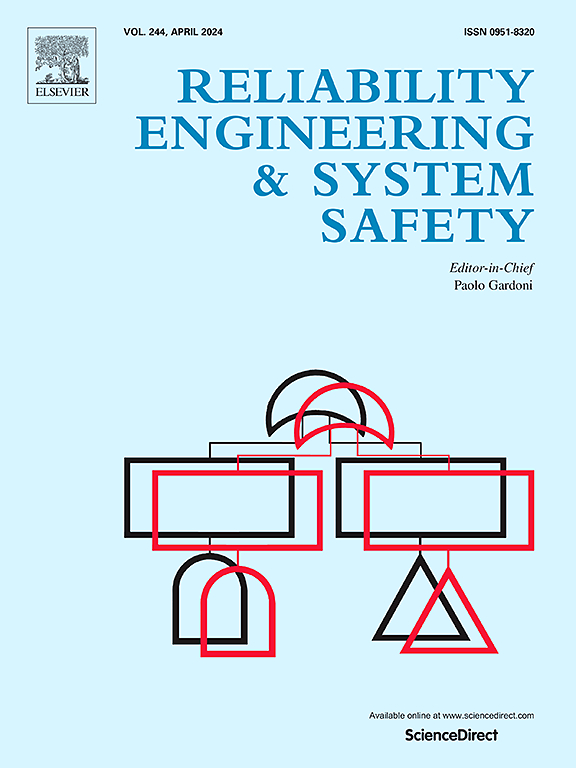Safety risk propagation in complex construction projects: Insights from metro deep foundation pit projects
IF 9.4
1区 工程技术
Q1 ENGINEERING, INDUSTRIAL
引用次数: 0
Abstract
Insufficient examination of safety risk propagation within complex construction projects (CCPs) leads to defective risk responses. This study attempts to exemplify metro deep foundation pit projects to investigate the mechanisms underlying this propagation. The interaction network of safety risk factors is constructed utilizing association rule mining and link prediction. A modified susceptible-infectious-recovered (SIR) model is used to simulate and analyze risk propagation within the network. The results highlight distinct risk propagation dynamics triggered by various initial hazardous/controlled factors. Risk factors from the owner or social environment are critical in initiating and controlling propagation, while those from the survey unit, designer, supervision unit, monitoring unit, working environment, or the contractor's organizational and managerial aspects have moderate effects. The contractor-related unsafe behaviors, mechanical, material, or structural factors, and natural environmental factors exhibit relatively limited impact. The ultimate risk level is contingent upon initial hazardous and controlled factors, with the risk controllability solely determined by the latter. It is recommended that the focus of safety management be broadened from contractors to owners and the social environment, and from isolated risk responses to risk network management. This study may deepen managers’ understanding of the sources of safety risk within CCPs, thereby promoting project success.
求助全文
约1分钟内获得全文
求助全文
来源期刊

Reliability Engineering & System Safety
管理科学-工程:工业
CiteScore
15.20
自引率
39.50%
发文量
621
审稿时长
67 days
期刊介绍:
Elsevier publishes Reliability Engineering & System Safety in association with the European Safety and Reliability Association and the Safety Engineering and Risk Analysis Division. The international journal is devoted to developing and applying methods to enhance the safety and reliability of complex technological systems, like nuclear power plants, chemical plants, hazardous waste facilities, space systems, offshore and maritime systems, transportation systems, constructed infrastructure, and manufacturing plants. The journal normally publishes only articles that involve the analysis of substantive problems related to the reliability of complex systems or present techniques and/or theoretical results that have a discernable relationship to the solution of such problems. An important aim is to balance academic material and practical applications.
 求助内容:
求助内容: 应助结果提醒方式:
应助结果提醒方式:


